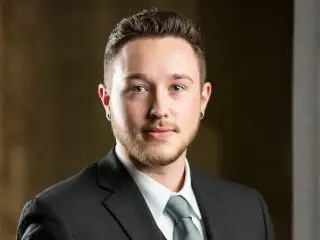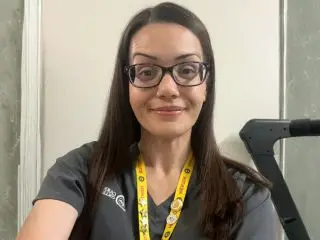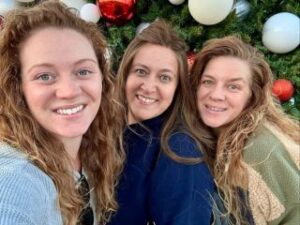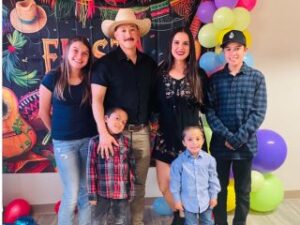When Aurora Flanagan graduated with her Doctor of Veterinary Medicine degree from the University of California, Davis, she envisioned a career providing care and comfort to dogs, cats, and a variety of other animals.
And while working at a busy Sacramento veterinary practice, that’s exactly what she did.
But these days, Flanagan interacts primarily with people — sharing her knowledge and expertise with students enrolled in the Carrington College Veterinary Technology program in Sacramento.
Why she loves teaching
“I love teaching because I know I’m preparing students for a specialized profession where what they do matters every day,” says Flanagan. “There’s something very gratifying about helping students develop the skills to provide quality care to animals — and to the people who love them”.
Flanagan says she especially enjoys the opportunity to interact with such a wide variety of students.
“Our program attracts an interesting mix of people,” says Flanagan. “Some students enroll directly out of high school. Others hold two- or four-year degrees in other fields and are looking to transition into a second or even third career. We also have students who’ve been working as veterinary assistants and are ready to take a career step that offers more responsibility and income. The one thing all of our students have in common is a love of animals and a desire to help them.”
Flanagan says she knows that pursuing a college degree while working or raising a family can be a balancing act.
“Most of my students live very full, very busy lives, and they’re doing their best to do it all,” she says. “I know how tough that can be. That’s one of the reasons I find the efficiency of our program so appealing. Students can graduate with their Associate of Science [degree] in Veterinary Technology in [as few as] 22 months. They can then sit for their board exams to become Registered Veterinary Technicians. Within two years, they can be working in a high-demand field, doing work they love.”
The veterinary profession, says Flanagan, tends to attract people who have a clear vision of what they want to do. She freely admits that when she enrolled in college, she wasn’t one of them.
“So many of my colleagues wanted to be vets since they were four years old,” she says. “I knew I wanted to work with animals in some capacity, and I went to UC Davis because it had a robust Animal Science program. But it really wasn’t until I did a rotation at a veterinary hospital that I decided I wanted to become a vet.”
After completing her B.S. degree in Animal Science, Flanagan worked at a Silicon Valley animal shelter for two years. In 2012, she returned to UC Davis, America’s largest and top-ranked veterinary school, to earn her Doctor of Veterinary Medicine degree.
“When I graduated from veterinary school, I don’t think it ever occurred to me that I’d end up back in the classroom as a teacher,” she says. “But for someone who cares about animals and loves teaching, it really offers the best of both worlds.”
In addition to lectures, Flanagan conducts surgical labs where students, under the supervision of instructors, assist her as she performs medical examinations, teeth cleanings, spaying and neutering, and other non-emergency veterinary procedures.
“I think I might get bored if I exclusively taught in a classroom,” Flanagan says. “The surgical labs allow me to teach while also providing a service and doing what I was trained to do.”
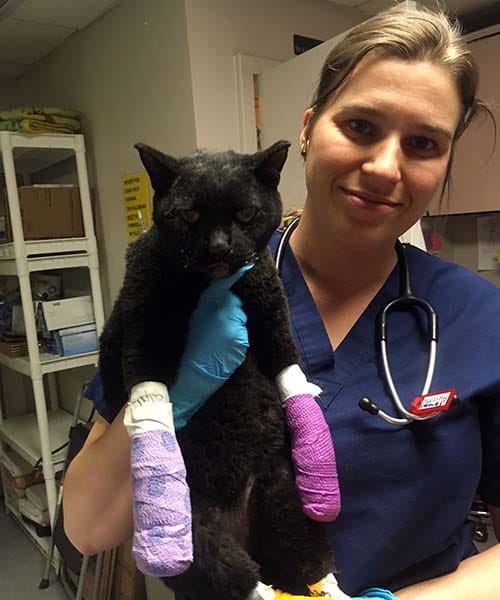
How helping animals injured by the Camp Fire impacted her teaching
That’s why Flanagan also donates her time and talents beyond the classroom. In addition to spaying and neutering feral cats at area shelters, she has volunteered with the California Veterinary Medical Reserve Corps, providing critical services to victims of the deadly 2018 Camp Fire.
“When my sister-in-law lost her home in the Camp Fire, I was reminded how completely lost and powerless people can feel in the midst of a disaster,” Flanagan says. “One of the greatest stressors people deal with in such a crisis is caring for their animals. When I heard there was a need for veterinarians, I was grateful to be able to offer whatever help and support I could.”
As a California Veterinary Medical Reserve Corps volunteer veterinarian, she was assigned to a makeshift animal shelter at Chico Airport.
“It was organized chaos,” Flanagan recalls. “When I arrived, a volunteer medical team had already been on site for two days. It was a huge room filled with rows of cages containing scared, stressed dogs who had been separated from their families. Some had suffered burns and other injuries, but most were primarily experiencing vomiting and diarrhea as a result of stress. They were there because they were either lost or their owners had nowhere to take them.”
Flanagan also volunteered at a Chico animal shelter run by a former classmate who needed help in providing emergency care to 15 seriously burned and injured cats.
“As I was tending to the cats — sedating them, removing bandages and dead skin from their paws, treating their wounds and applying antibiotics — I worked alongside some incredible veterinary technicians and assistants whose skills and temperament totally impressed me,” says Flanagan. “If I can help teach my students to provide that quality of care, with that level of compassion, I’ll know that the work I’m doing in the classroom is making a difference.”
Are you interested in training to become a veterinary technician? Check out information on Carrington College’s Veterinary Technology program:
